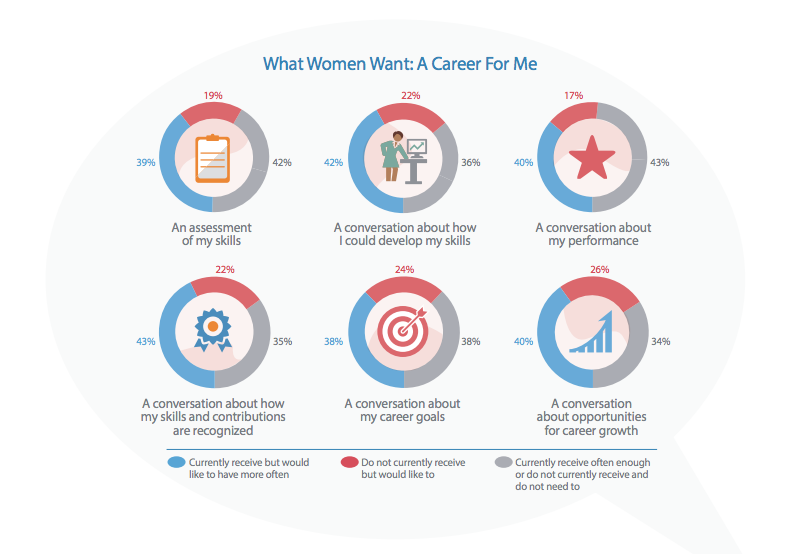Women are already underrepresented in industries anticipating the greatest job growth, such as engineering, technology, architecture and mathematics. Additionally, they’re overrepresented in jobs most threatened by digitisation, automation and robotics, such as office and administration roles.
A new report from Right Management reveals this triple threat: underrepresentation in industries poised for growth, over representation in roles threatened by automation and stubbornly low levels of women in senior roles.
While the number of women has outnumbered male university graduates in 95 of 144 countries and the percentage of women on large company boards has almost doubled over the past five years to 25 per cent, the report, ‘Women, we hear you: Empowering women in the workplace through ongoing career conversations’ suggests this is still an illusion of progress when it comes to achieving gender parity.
“They say programmes, policy and HR will make gender neutral hiring and parity happen. But these are tried, tested and too slow. Women leaders know that relying on policies or practices is simply not enough and that change starts at an individual level. Leaders say gender parity is still at least a generation away—an average of 17 years. So are we kidding ourselves?”
Findings from the report suggest that awareness is the first step. Here are the top three takeaways from Right Management’s deep-dive into championing career development for women.
Managers should initiate career conversations
Just one in five female leaders has ongoing career conversations with their manager. When male leaders say the best way to advance is to self-promote, be open to risks, challenges and new opportunities, employers risk losing top talent unless they start talking, according to the report. Research has repeatedly pointed out that women do not raise their hands until they know they can do the job, so may not actively seek stretch assignments. Assuming a scenario where most female employees aren’t promoting themselves to male leaders who are the majority in management, the onus is then on management teams to initiate open career conversations. These conversations provide the perfect opportunity to reaffirm strengths and align women’s goals and motivations with the organisation’s needs.
Managers should present training and up-skilling opportunities
Employability today depends on their ability to demonstrate the desire and ability to learn new skills to stay relevant for the long-term. The report suggests that both employers and individuals should nurture this trait and up-skill. Yet one in five women has never had an assessment of their skills and one in four has never had a conversation about how they can develop. Again, the onus may fall on managers to make sure female staff are given the same opportunities for continuing education.

Women tend to be over mentored and under sponsored
What defines a sponsor versus a mentor is often misunderstood, but they are not interchangeable. According to the report, women tend to be over mentored and under sponsored. Mentors, according to the report, are a sounding board for women, but they do not help them get ahead. Sponsors develop talent and help women to get promoted. They have open conversations, help address how work gets done and the way performance is measured. Sponsors create a culture of conscious inclusion and support and consciously advocate for women in the boardroom. For many women, lack of access to a sponsor and an inability to identify an influential network is an obstacle to progression. Eighty-four percent of women have not been able to find a sponsor within their organisation, for example, which is symptomatic of a closed corporate culture.






